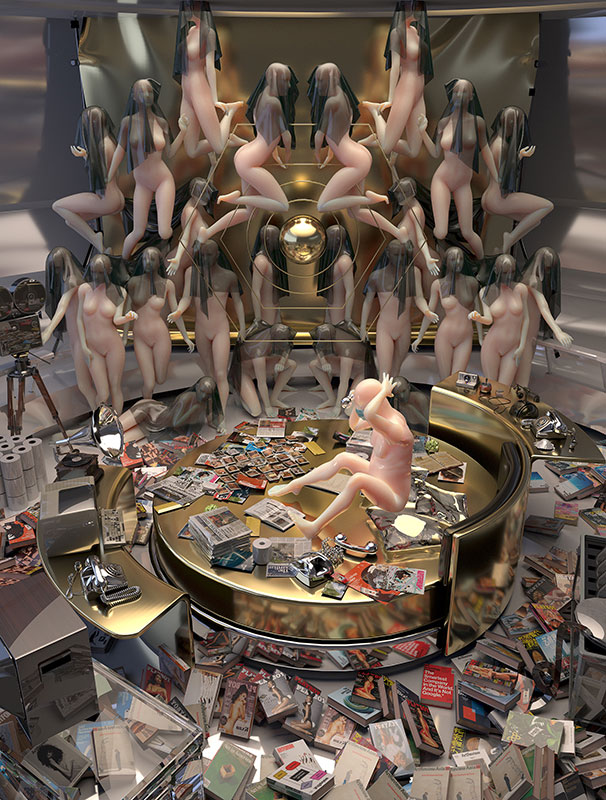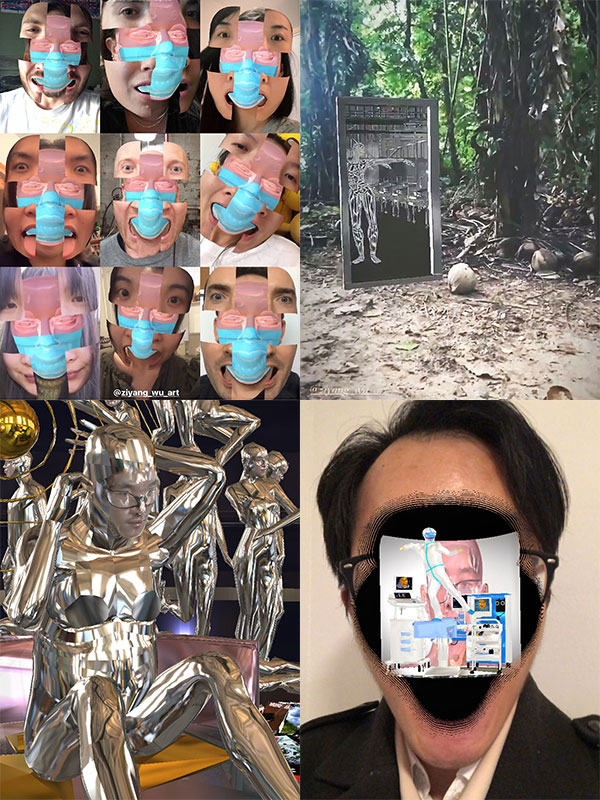21 Artists to Watch in 2021: Part I of 2021’s Movers and Shakers
ANTE Magazine
January 11, 2021
https://antemag.com/2021/01/11/21-artists-to-watch-in-2021-part-i-of-2021s-movers-and-shakers/
ANTE mag is proud to shine a spotlight on the dedicated artists who are exerting an impact in the art world in 2021. From ongoing or upcoming solo exhibitions, to gaining recognition through artist talks, recognitions, awards and international residencies, these are some of the top artists we have an eye on as we move into the new year.
Ziyang Wu
Lives and works in New York City
ANTE mag. You have an ongoing exhibition on view through February 18th in NYC and an upcoming show in Singapore. Can you talk to us about each show, and what work you have included in each?
ZW. I’m showing my most recent project Where Did Macy Go? in both shows. The show in New York includes the main video and a large print (video still). The upcoming show in Singapore (My first solo exhibition in Asia) will include a large projection of the main video, 5 prints (video still) on aluminum, and a giant inflatable of the protagonist Macy (18 x 7 feet).
Where Did Macy Go? is an 11-episode animated video told through a series of reports of Macy’s encounter with the epidemic, life during the quarantine, search for his grandfather’s farm and his revival. The video discusses the collapse of old community structures, the emergence of a new community after decollectivization, Confucian obedience vs. social obedience, as well as the new tele-republic of home, “mask politics” and social justice under the pandemic. Originally posted on TikTok to challenge the possibility of online exhibitions, the work is a response to this era of volatility, complexity and confusion.
Heavily inspired by Homi Bhabha’s The Third Space theory, my project often includes setting up a multi-layered system to trigger the collision of various conflicting or seemingly unrelated elements and topics from different social and cultural backgrounds. Due to Covid-19, it’s the first time we seen so many thinkers from all over the world writing about the same issue at the same time, from Italian philosopher Giorgio Agemben’s techno-totalitarism, to the argument between Slovenian philosopher Zizek and Korean-born German philosopher Han Byung-Chul: The re-invention of communism vs. the vigorous restoration of global capitalism, to French philosopher Bruno Latour and French writer François Gemenne’s argument on COVID’s influence on climate change, to Paul B. Preciado’s Pharmacopornography and Tele-Republic of Home. By juxtaposing all the complex and even conflicting arguments above, I was able to examine the “in-between” space of different social and political ideologies using COVID-19 as context.
ANTE mag. As an extension of your practice you’ve been creating AR filters which are regularly becoming wildly popular across social media. Can you talk to how these filters expand your practice outside of perhaps a narrower view of what constitutes Fine Art studies at the university level for example?
ZW. Similar to posting the videos on TikTok, these AR effects and Instagram filters, which is a part of the project Where Did Macy Go?, are also my response to the current time where many exhibitions were trying to recreate an IRL experience on their own websites, while I prefer to take advantage of what Internet and social media does the best: sharing and redistributing. So far these AR effects have been shown over 100,000 times on Instagram.
I think they opened up some new possibilities for my work. For example, when using the Macy (Split Face) filter, every user becomes a version of Macy. When thousands of users post their own version of Macy, the dimension of this project are widely expanded (both conceptually and geologically), which is very important to the in-between space I was seeking to achieve. Additionally, when using the Macy (Playboy) application, for example, dozens of characters’ faces in the scene are replaced by the user’s face, which creates a new possibility for a collective narrative. It could also be seen/used as a new tool for performance works.
This mode of exploration and experimentation exists in all my works: They often start from an event, a moment, an emotion, or a stimulation that I have strong feelings about. I will then start my research including studying the related philosophy and history, collecting archives and data, and finding the most appropriate medium to realize the project, which often includes learning a new technique or collaborating with professionals in the related field. It is very important to examine what each medium is best at, and be able to choose the right medium that could convey your concept the most successfully and efficiently. Especially, each medium and genre have their own established ways of experiencing the works. When we utilize a particular medium, we already have a long history in its own field that serves as the context of experiencing the work, which could be either taken advantage of, and/or be used to challenge and subvert.
 ANTE mag. Speaking of academia, you are also busy working as an instructor at SVA and ITP. How do you find that teaching impacts your practice in the studio and vice versa?
ANTE mag. Speaking of academia, you are also busy working as an instructor at SVA and ITP. How do you find that teaching impacts your practice in the studio and vice versa?
ZW. As a visual artist, I have always believed that my responsibility and function (or what artists are best at) is to ask questions by constructing a visual experience, instead of solving problems (For example, activists, scientists and politicians are so much better at solving problems than artists).
What teaching brought me, is the notion of solving problems through education, and achieving something through a collective manner, especially in today’s unique context. I have been making a few collaborative projects in the past few years, and I’m hoping to do more in the future.
ANTE mag. What are you looking forward to in 2021 in your studio?
ZW. I’m currently working on a project titled Networked Ecosystem (in collaboration with artist Mark Ramos) – A live-simulation project that presents an ecosystem built of a variety of AI senses. Commissioned by NEW INC, Rhizome and Nokia Bell Labs, Networked Ecosystem takes LIDAR (location and distance), GECKO (temperature, humidity, air pressure and gas density) and other robotic vision and sensing data collected by Bell Labs’ experimental robots and sensors over the past few decades, re-purposing it to drive a 3D environmental simulation that viewers explore and interact with the simulated world and each other in an ever-changing environment. In particular, the simulation will present AI’s past, current (Covid-19), and future encounter and experience of climate change based on the massive collected climate related data, to contemplate questions about human’s sensory relationships with robot and AI, and how they survive in the chaotic world we’ve created.
 Image courtesy Ziyang Wu.
Image courtesy Ziyang Wu.

